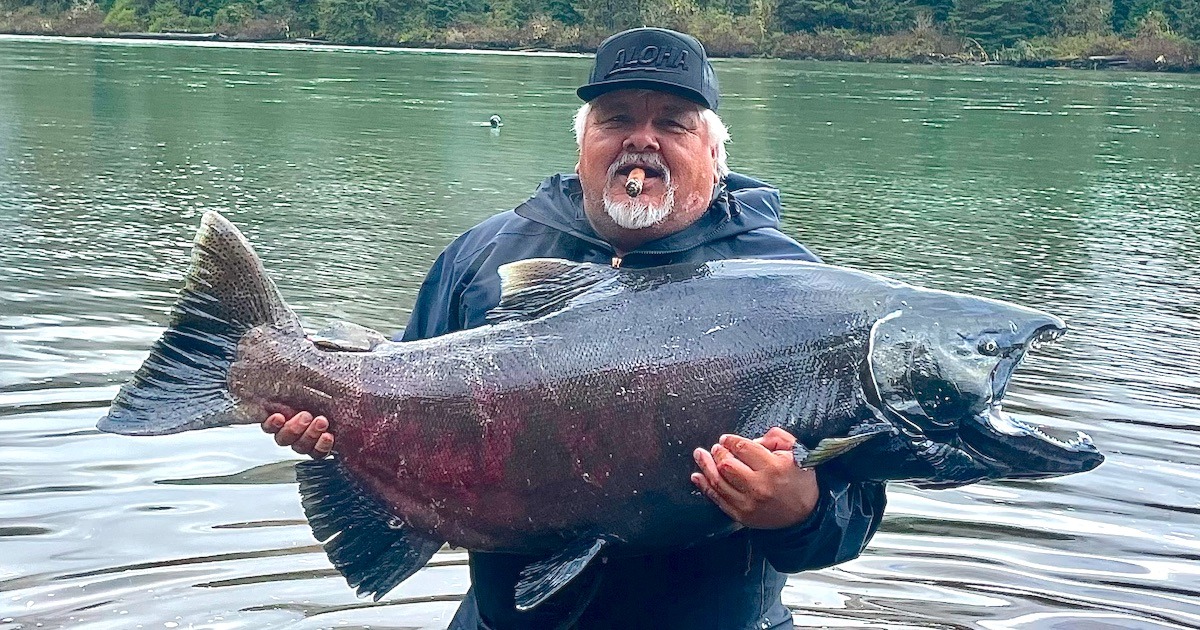
In my time producing and hosting Big Coast, I’ve been incredibly fortunate to boat and fish the British Columbia coast for the past 16 years, often trolling for giant Chinook or offshore Albacore tuna in some magical places.
But there is no doubt one of the coolest things I’ve ever experienced is the Percy Walkus Hatchery broodstock fishery for Wannock River Chinook salmon.
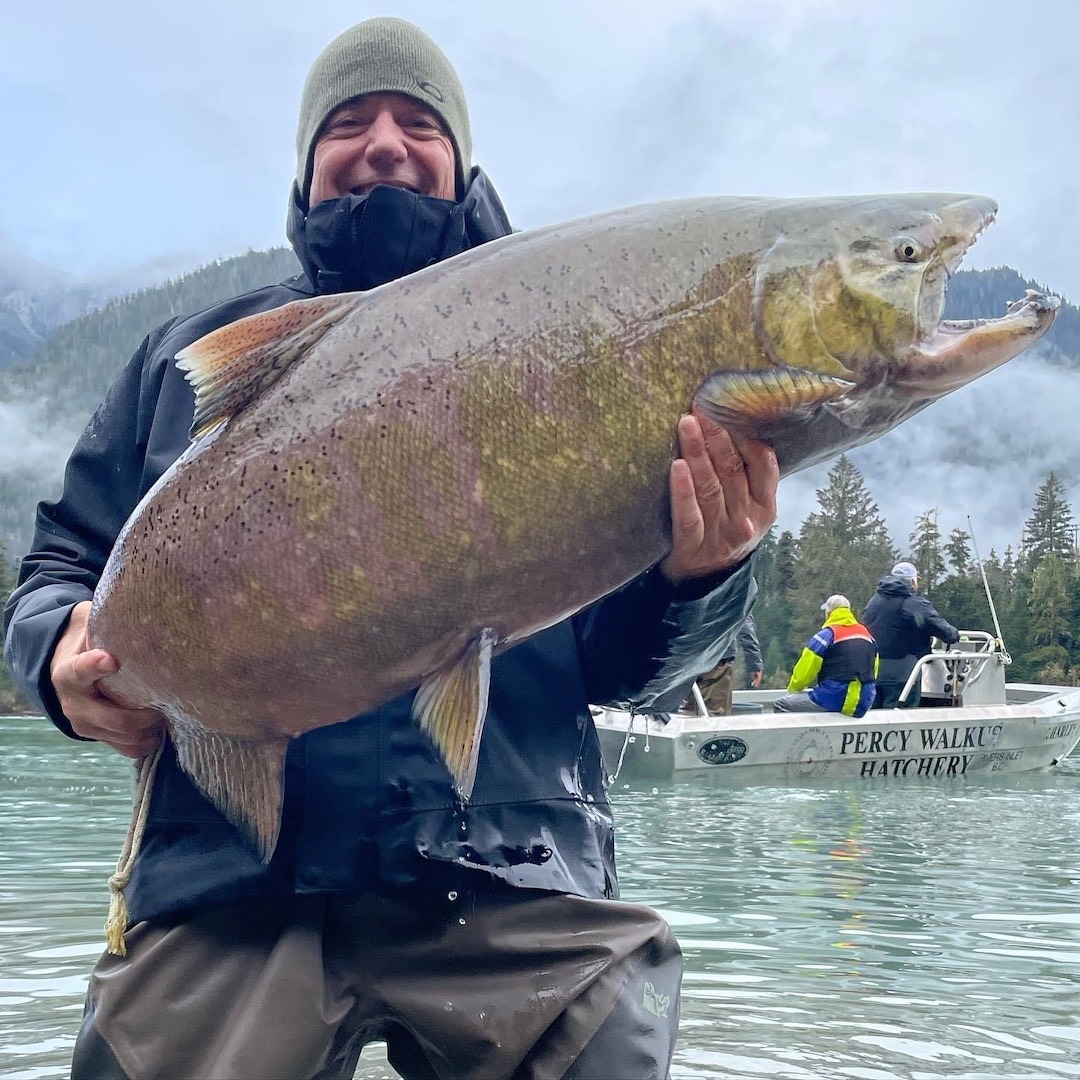
Tim Milne Big Coast
Thanks to a longtime friendship with Wuikinuxv Nation hereditary chief Ted Walkus and Duncanby Fishing Lodge owner Sid Keay, I was invited to participate and film my first Rivers Inlet egg take back in 2016. The moments from that first Wannock River experience will never leave me. They’re indelibly etched in my coastal DNA. There is nothing like holding a 75-lb river monster. None of this was lost on me when I boarded the Sea Air flight out of Vancouver South Terminal this October, bound for Wuikinuxv and my sixth Wannock broodstock fishery.
Key Wannock Salmon Facts
Wannock River Chinook are some of the largest left on Earth, and most certainly the North American West Coast. The Wannock is one of only two remaining rivers statistically significant in production of 40-lb+ fish (the other is Kitsumkalem). If you’re catching a 50-pounder between Hartley Bay and Rivers Inlet … don’t even get started with the math.
Carcasses from Wannock salmon taken in the broodstock fishery are distributed in Wuikinuxv Village for smoking and winter food preparation.

A Wannock River Marathon
The Percy Walkus Hatchery Wannock River egg take is scheduled every year in mid-October in Wuikinuxv Village at the head of Rivers Inlet, British Columbia.
It’s a classic west coast time of season, often featuring pummelling rain or the latest in environmental events—the atmospheric river! It can be wet for days, but the beauty of Wuikinuxv Traditional Territory and Wannock River can’t be overstated. Framed by towering mountains, the Wannock flows between Rivers Inlet and 40-mile long Owikeno Lake. It’s breathtaking Great Bear Rainforest country.

Head of Rivers Inlet, British Columbia
Wuikinuxv brothers Ted and Dwayne Walkus—along with Marshall Hans Jr., a longtime Nuxalk Nation fisheries technician from Bella Coola—make up the First Nations leadership team, not to mention some of the finest comedy on the Wannock River. Between the trio there are so many decades of hatchery work and conservation of Wannock Chinook, it’s staggering.

Dwayne Walkus, Marshall Hans Jr. and Ted Walkus
“First and foremost we’re friends, we’re brothers, we all get along so well, and we like to have a good time,” says Walkus with a wry smile. “We adopted Marshall into our family. Gave him a name from Wuikinuxv Territory. He’s so passionate about these Wannock Chinook.”
The core egg take outfit is comprised of a few hearty crew, guide staff from Duncanby Lodge, and various members of the Keay family. That slate of six to eight is augmented by another 16 volunteers who fly in for 3-day trips on the river. It’s a fantastic bunch who donate to the Percy Walkus Hatchery cause—and don waders and work their butts off.
The Percy Walkus Hatchery employs three staff, led by Heather Hewitt (2022), who do an incredible job helping drive the broodstock fishery. Volunteers from the Wuikinuxv Guardian program lend a hand and their awesome local expertise.
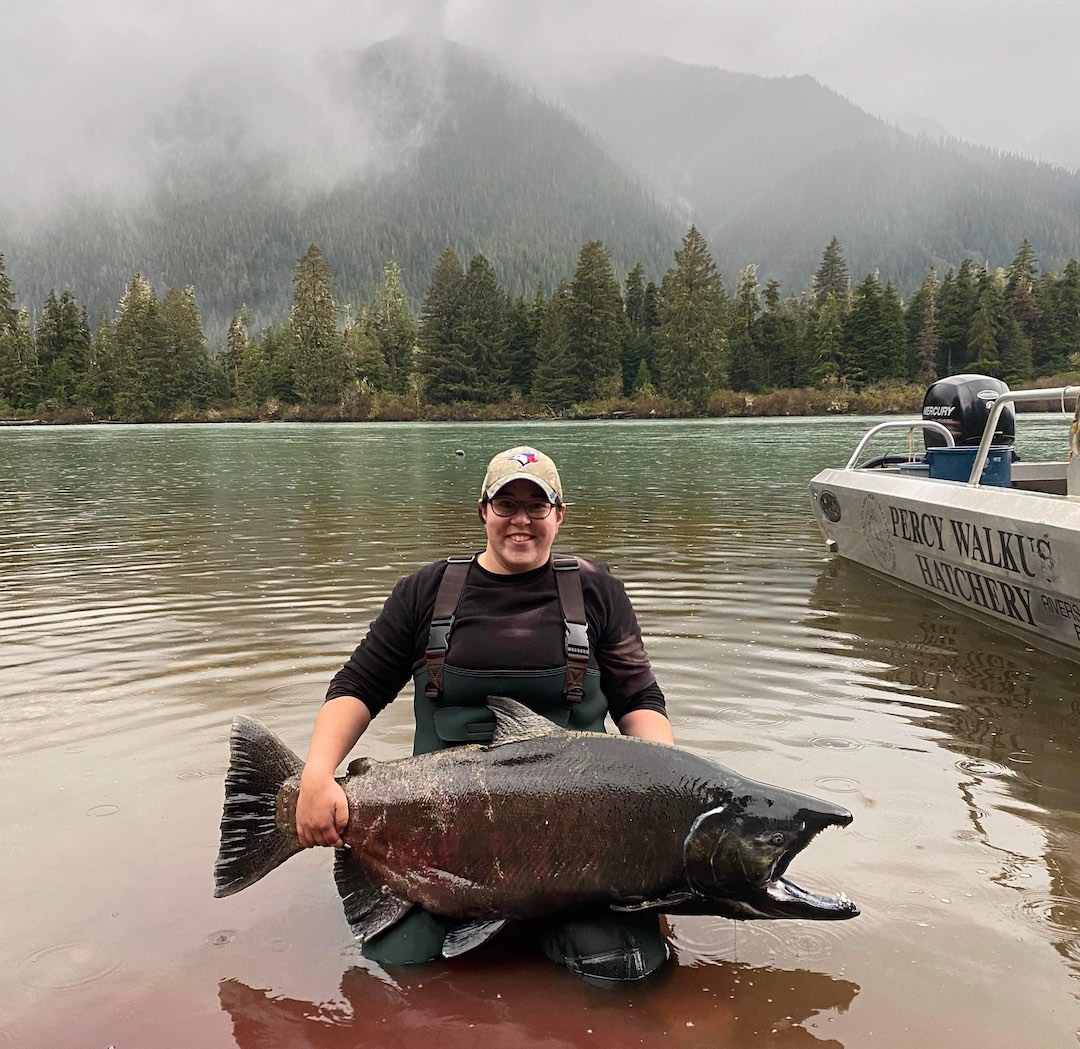
Heather Hewitt 2022 Percy Walkus Hatchery Manager
Over the years in Rivers Inlet there have been a number of salmon hatchery incarnations. For years, eggs from the Wannock River were flown to the Snootli Hatchery in Bella Coola.
The Percy Walkus Hatchery was built in 2016 through an incredible partnership between the Wuikinuxv Nation, Duncanby Lodge, and Good Hope Cannery, with more assistance from the Rick Hansen Foundation, Bridgeview Marine, and the Pacific Salmon Foundation. Percy Walkus was Ted and Dwayne’s uncle and a source of inspiration.
“The hatchery is so important to our people,” says the 60-something Walkus. “They’re the biggest salmon left in all of BC. We still have these wonderful animals that inhabit our waters and come home every year. Just the simple size. It’s just a sense of pride and continued history.”
A Tough Year
The Wannock egg take is normally a week-long affair. The program goal is 300,000 Chinook eggs, produced from approximately 40 females and 40 male fish. Those numbers, however, proved to be an immediate challenge in 2022 with warm temps and drought conditions.
“It was hard believe,” says Hans. “The air temperature was in the high teens when we got there, and the river was low. [Put these] two things together, and we knew it was going to be a challenge.”
And daunting from the outset it was. River levels were extremely low. Water temperature was up to 7 ̊C warmer than usual. Water clarity was off the charts, meaning Chinook could see the gillnet coming and easily avoid it.
“It was a grind. Doing a lot of sets and getting zeros more than we normally would,” Hans adds.
Through the first several days, fishing success was fleeting. A 118′ gillnet with 91⁄4-” mesh was held between two jet boats and purse seined up at the bottom of each drift. Set after set came up empty or with only a few fish, and the Walkus brothers and Hans schemed to figure out the fishing conundrum.
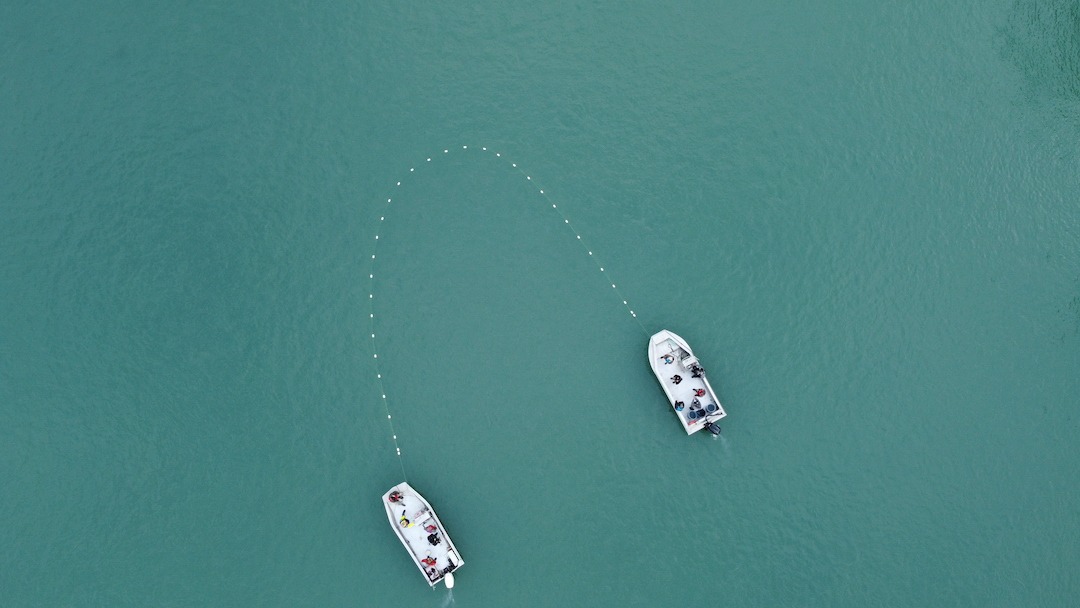
A 118′ gillnet with 91⁄4-” mesh was held between two jet boats and purse seined up at the bottom of each drift.

“Sport fishing was tough this year and everything was late … and so it happened here too,” says Walkus, long-time saltwater guide and manager at Good Hope Cannery in summers. “The weather hasn’t been on our side. It’s been so dry and the river has been so low. We’ve had a tough go.”
There were strange telltale signs on the Wannock that fish were, in fact, late. Females that were captured were green or hard, in broodstock fishery speak. When a female is ready to give her eggs, her belly is soft and often referred to as “jelly belly.” Conversely, these females were hard and subsequently stored in aluminum holding tubes in the river to “ripen.” Normally the crew would see some partially spawned or spawned-out fish. But this simply wasn’t the case in 2022.
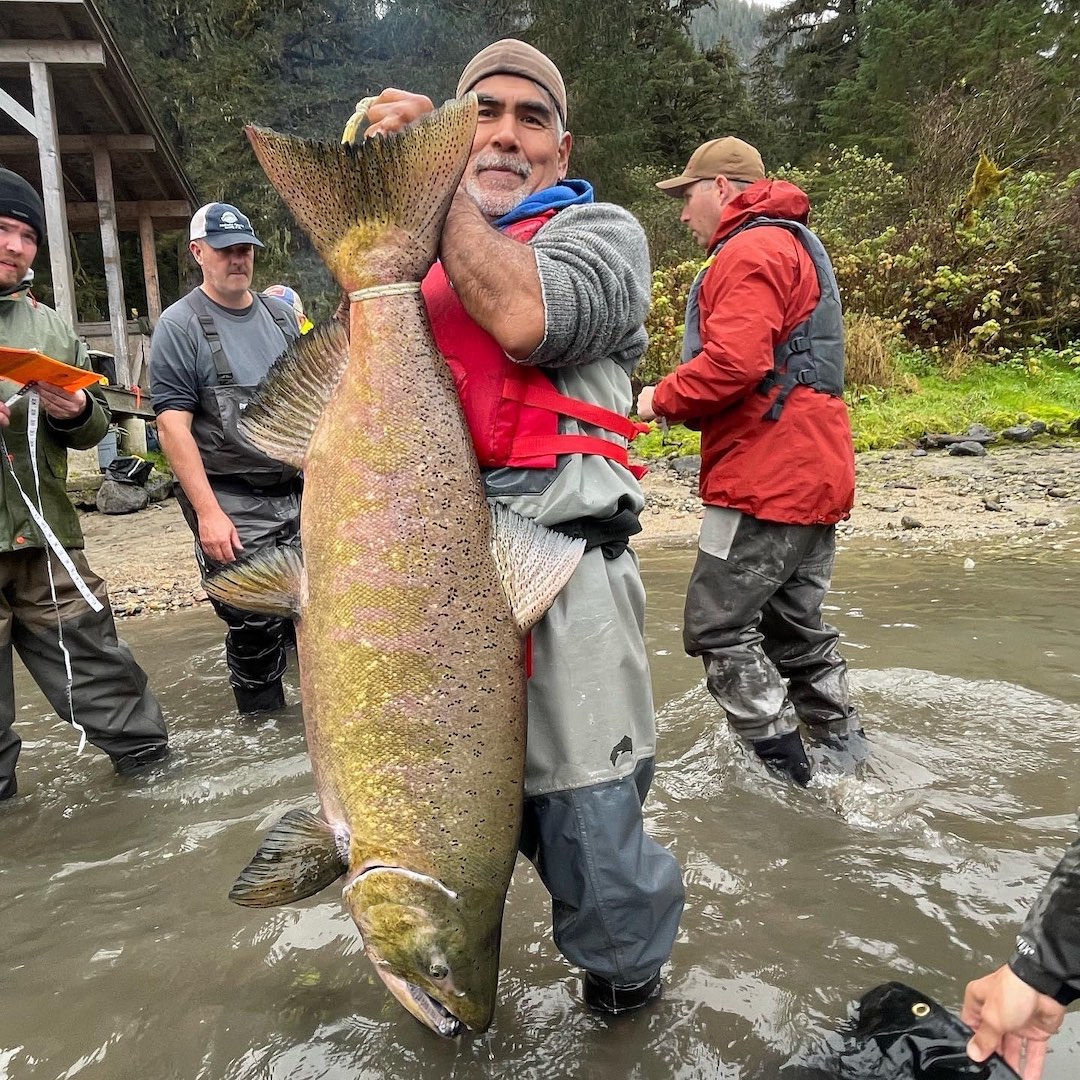
Dwayne Walkus
“For me not seeing any partials or (spawned-out) kelts was a sign,” says Hans Jr. “It was a timing thing for sure, based on what I’ve heard around the province from other runs and returns.”
Over many years a variety of fishing techniques have been developed on the Wannock River. And it seems each year is unique. Some years the water level has been extremely high, and other seasons it’s low. Precipitation has wreaked havoc some seasons. And then there are the grizzly bears.
So the team worked tirelessly in the early days, doing beach sets and a variety of different drifts. The beach sets have been a fixture in recent history, with workers along the rocky shoreline corralling fish after the net is handed off. Often effective, the beach sets helped catch the most fish in the first week.
Challenges and low numbers persisted, up to 20 female Chinook were being held in tubes, and numbers in the hatchery were shockingly low. “I’ve been at it for over 35 years and every year is different” Walkus says. “We have to adapt and find a way to catch these fish. This year has been exceptionally tough with low numbers and low water.”
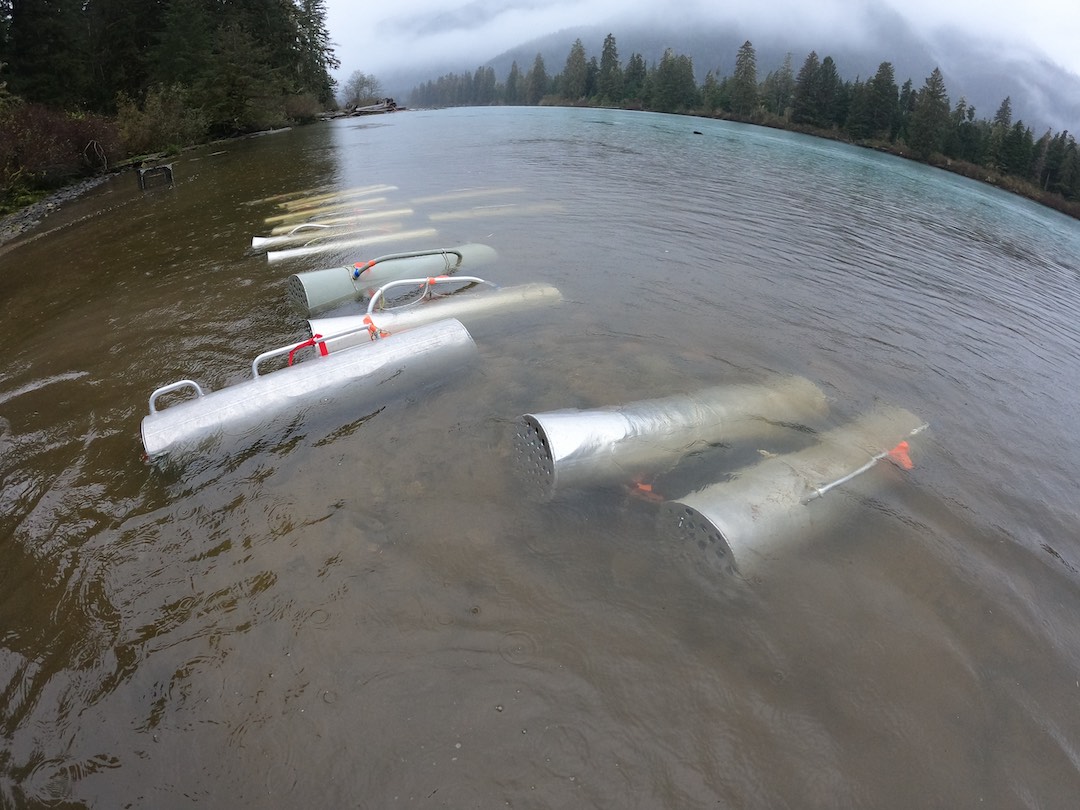
Chinook Tubes

Opening the tube to retrieve the fish
Normally the 300,000-egg target would be met inside a week. After seven days, only 60,000 fertilized eggs were counted in trays—a scary prospect, considering a large part of the crew was flying out by float plane and only a skeleton team remained.
“I was thinking, ‘Oh my god—are we even going to get into triple digits of our goal?’” Hans Jr. says with a worried smile. “Holy mackerel. Where are all the fish?”
A small crew was committed to staying as long as it took. In addition to Hans Jr., Ted and Dwayne, Mitch Keay, Tim Milne, and a few Duncanby guides augmented the Wuikinuxv team of three. It was a small crew for two jet boats and a plethora of science work—sampling, egg collection, and sperm take from bucks.
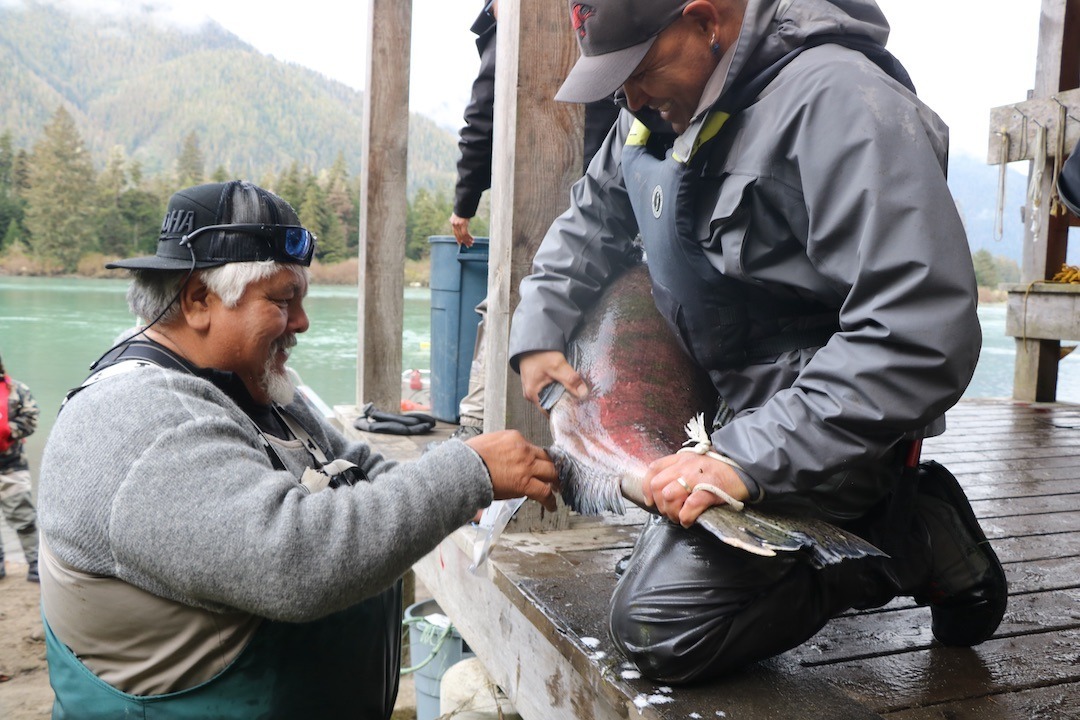
Sperm Take
…Turns Into A Triumph
But a funny thing happened after week one of the 2022 Wannock River egg take: The skies finally unloaded. The air turned seriously cold, falling to freezing overnight. Snow appeared on mountain tops and the rain came down like, well, an atmospheric river. Ted said, “This was a marathon. 11 days straight on the river is a lot of work, a lot of sampling, and it wears you out.”
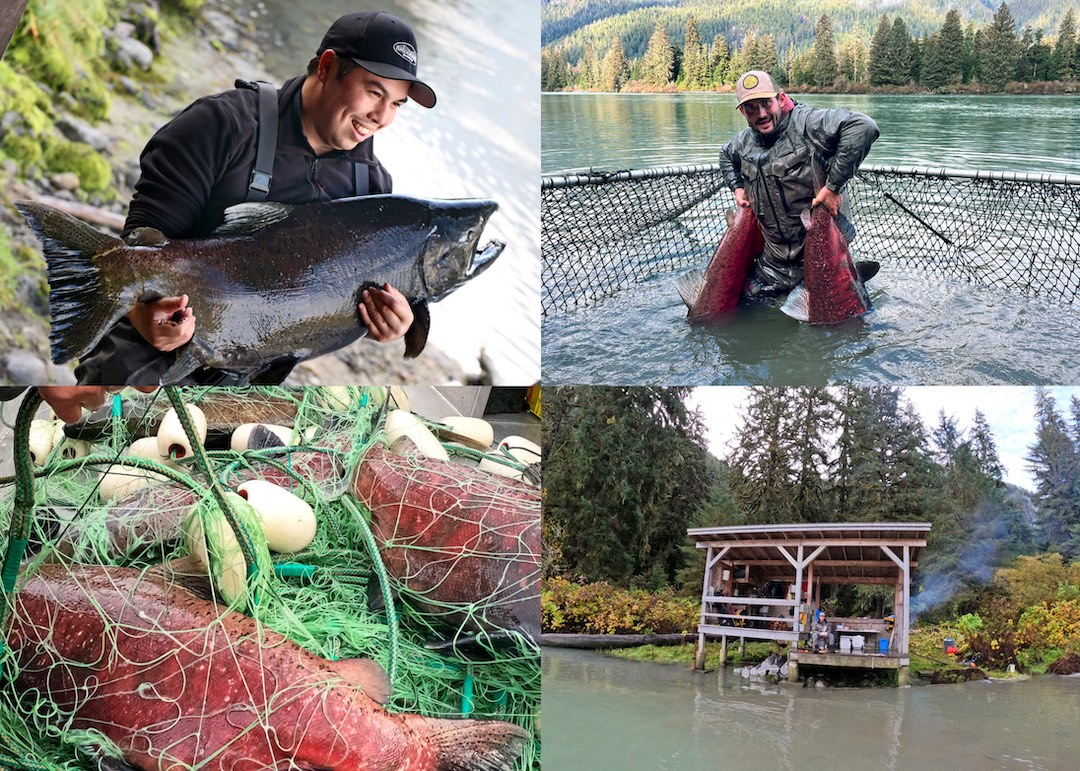
ercy Walkus Hatchery broodstock fishery for Wannock River Chinook salmon
And with the temperature drop and rising river came the fish. Maybe not in the numbers of past years, but definitely much improved. Sets started increasing and ripe females with “jelly bellies” miraculously appeared. And then a giant 77-pound buck, the largest of the season, was pulled from the gillnet. High fives all around!
“And we had a 54-lb hatchery male today,” Walkus beams while holding a Chinook and smoking a celebratory cigar. “Contrary to popular belief [that] hatcheries don’t produce big fish, here’s proof: The Wannock River and Percy Walkus Hatchery still produce big fish. The count back at the Percy Walkus Hatchery reached 250,000 fertilized eggs, with another dozen females still holding in tubes. Over the next several days, PWH staff spent time on the river checking females and wrapping up. In the end, a total of 292,670 eggs were secured in the hatchery, from a total of 39 female Chinook and 42 males.

Wannock River Chinook
“Adaptation is key to success of any program you do for broodstock collection,” Hans adds. “It’s been since the nineties I’ve been coming out here in October. It’s one of the highlights of my season for sure. And it’s not just the size of the fish.”
Over the winter’s rainy months, salmon eggs are hatched and fry reared in large tubs. When they reach 3 g, about 70% of the fish are adipose-clipped and tagged with coded wire. When they reach 5 g, sometime in June, the Wannock Chinook are released back into river and ocean, and the life cycle of British Columbia’s largest salmon rolls on.
As the Walkus brothers, Hans Jr., and the ragtag Percy Walkus crew finally boarded the float plane bound for Vancouver, a slate of Wannock River Chinook eggs lay quietly at Percy Walkus Hatchery where winter rains poured down on the metal roof. This was, after all, the Great Bear Rainforest, and the end of a wild salmon marathon in Wuikinuxv Territory.
Photography by TIM MILNE & KYLE MORTON
This article appeared in Island Fisherman magazine. Never miss another issue—subscribe today!
Visit the Store
$34.99
$34.99
Featured Catch

Joel Unickow halibut (Photo: Rob Frawley Lucky Strike Sportfishing Tofino)







